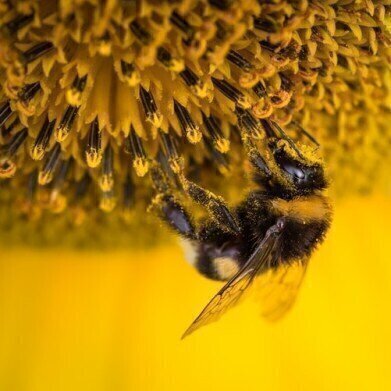LC-MS
Chromatography Checks Honey for Carbaryl Residue
Sep 14 2019
The collection of honey is an activity that stretches back over 8000 years according to cave paintings in Spain. And remnants of honey have been identified inside vessels found in Georgia dating back almost 5000 years. Its use was not only restricted to sweetening food too. The Ancient Egyptians embalmed their dead using honey and honey was offered to Min, the Egyptian god of fertility.
In more recent years though, honey bees have been given a hard time as man changes the landscape and reduces the biodiversity that keeps bees and other insects healthy. And this is a pity because the honey that bees produce can contain the poisons man uses to control nature. A recent paper in Pharmacognosy Magazine - Liquid chromatography–mass spectrometry/mass spectrometry method development for the determination of carbaryl residue in honey - reports on a new chromatography method developed to analyse carbaryl residues in honey.
Carbaryl - what is it?
Carbaryl (1-naphthyl methylcarbamate) is a pesticide that is commonly used to control aphids, ticks, fleas and other pests. It was discovered and introduced in the late 1950s and is a white crystalline solid. By its very nature it is toxic to insects. There are many pesticides that contain carbaryl, with over 150 different registered products containing carbaryl and it is the third most used insecticide in the US. It is used on crops, gardens and lawns.
It works by contact. When an insect touches, or eats, carbaryl its nervous system malfunctions. Normally, nerves pass a signal to other nerves using a signalling chemical. When the signal reaches its target the signalling chemical is broken down by an enzyme allowing the nerves to return to a resting state awaiting another signal. But carbaryl stops the enzyme from working meaning that the nerves are in a state of constant excitement. This means that the insect cannot regulate its breathing properly and so it dies.
Unfortunately, bees that feed on contaminated crops or flowers transfer the insecticide into honey. This can in turn mean that the insecticide is eaten by humans. Carbaryl has a few benefits over other insecticides though, there is reportedly less bioaccumulation and it is less toxic to mammals compared to some other insecticides.
It’s in the honey mummy
The team behind the paper referenced above were interested to develop and optimize a method for the determination of carbaryl in honey. The method they optimized was based on liquid chromatography-tandem mass spectrometry (LC-MS/MS). Chromatography is an ideal technique for the analysis of pesticide residues, a topic covered in the article, Gradient Retention Time Prediction for 653 Pesticides on a Biphenyl lc Column Using Machine Learning.
The team report that the method was optimized to improve both the sensitivity and resolution. They tested two different extraction methods - solid phase extraction and QuChERS - and found no differences between them, so both are suitable for the analysis of carbaryl in honey.
Digital Edition
Chromatography Today - Buyers' Guide 2022
October 2023
In This Edition Modern & Practical Applications - Accelerating ADC Development with Mass Spectrometry - Implementing High-Resolution Ion Mobility into Peptide Mapping Workflows Chromatogr...
View all digital editions
Events
Apr 28 2024 Montreal, Quebec, Canada
May 05 2024 Seville, Spain
May 15 2024 Birmingham, UK
May 19 2024 Brno, Czech Republic
May 21 2024 Lagos, Nigeria














